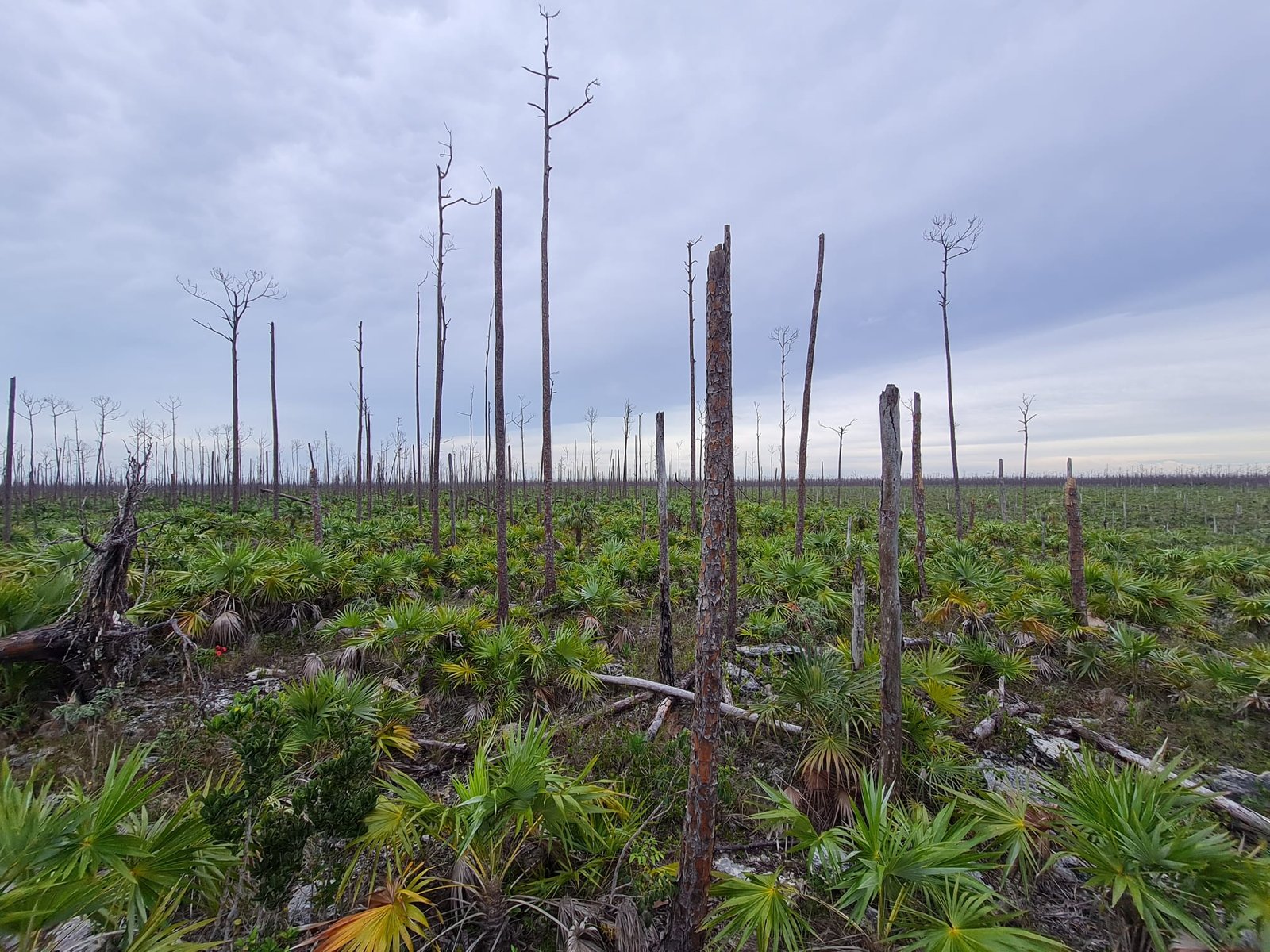NASSAU, BAHAMAS — In the pinelands and mangroves that make East Grand Bahama so distinctly unique, nature is replenishing itself from the massive destruction of Hurricane Dorian.
The restoration slowly taking shape is evidence that the death and devastation that the massive storm left behind is giving way to new life, according to biodiversity experts and scientists who recently conducted field assessments.
The biodiversity consultants with the Implementing Land, Water and Ecosystems Management (IWEco) in The Bahamas project have concluded a new phase of field surveys in East Grand Bahama. The team assessed pinelands and wetlands, collecting detailed information on the habitats and the life forms they support for a biodiversity inventory that will be published as part of the project.

Mark Daniels, biodiversity consultant with BRON Ltd, said: “We have yet to see a standing pine tree that remains alive. In different types of pine habitats, however, you’re seeing different rates of recovery, with seedlings beginning to be established, and these seedlings are typically anywhere from eight to 12 inches tall, and some we’ve seen are two to three feet tall.”
The biodiversity team spent more than a week conducting point counts, walking transects and vegetation plots to better understand the recovery process of pine and wetland areas in East Grand Bahama since Hurricane Dorian in 2019.
“The external fringes of those mangrove systems remain dead. However, in the more protected interior regions of these mangrove patches, you are seeing mangroves returning and those creek systems where you have mangrove habitats that are inland and protected from the full force of the sea are also recovering and looking very healthy,” Daniels said.
Scott Johnson, biodiversity consultant with BRON Ltd, said: “We are seeing a lot more birds in the area but most of them are winter migrants from North America coming to The Bahamas and their presence increases our avian fauna by over 50 percent.
“What’s also interesting is that some of the highest diversity of birds we are seeing is in patches of coppice areas in East Grand Bahama. These birds are occupying sites that have a variety of plant species that are producing flowers and some fruits, so they have food resources.”

Although the Bahama Yellowthroat and Bahama Woodstar have been observed in the area, other pineland species of birds have not been seen since Hurricane Dorian in 2019, he added.
Information on the wildlife in East Grand Bahama will also be included in the biodiversity inventory that will be made public.
The IWEco The Bahamas project is part of a larger, regional undertaking for the Caribbean. The project aims to develop and implement of integrated systems that support ecosystem health and strengthen national monitoring and evaluation systems.
IWEco The Bahamas National Project Coordinator Melissa Ingraham said: “The Biodiversity Inventory conducted under the IWEco project and its respective findings show significant signs of ecosystem regeneration, and therefore signs of hope as it relates to Hurricane Dorian recovery.
“The inventory, amongst other project aspects, such as the development of an ecotourism sector and capacity-building opportunities, will be incorporated into a watershed management plan to sustainably guide resource use and management at a community-based level.”








